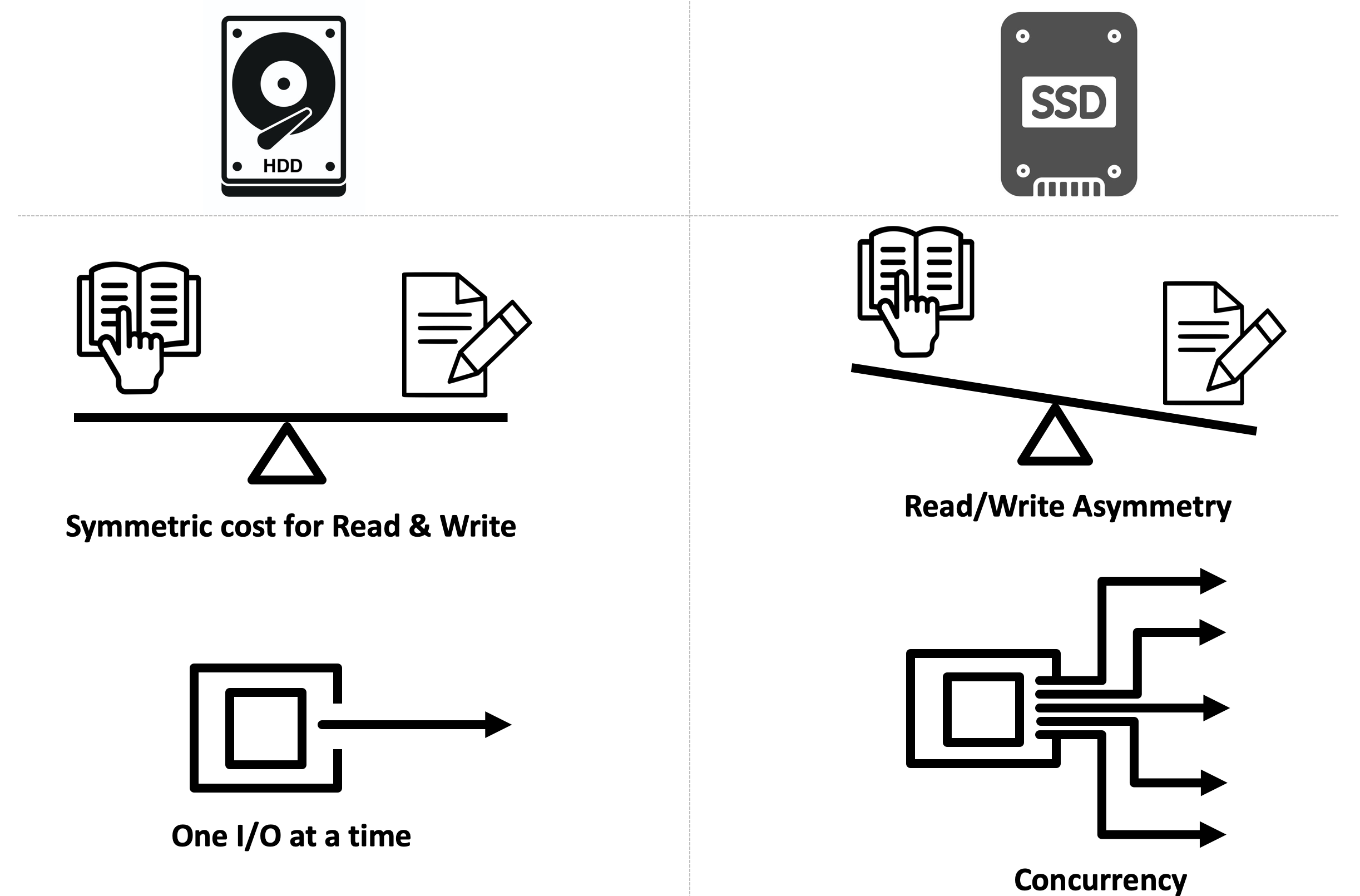For more details, check our paper!
In Proceedings of the Annual Conference on Innovative Data Systems Research (CIDR), 2021 (abstract)

Over the past few decades, storage and main-memory devices have evolved drastically, offering extremely fast read/write access, increased storage, lower cost, lower latency and energy consumption, and higher density. Consequently, these devices (e.g. Solid State Drive aka SSD) do not share some properties (i.e. read/write asymmetry, internal parallelism) with the classical rotating hard disk drives (HDD). These properties are crucial because only by utilizing these properties, the full benefits of the modern devices can be achieved.
The traditional I/O model (EM Model) was developed based on the properties of HDDs, and has not evolved accordingly while it is still widely used. The EM Model is based on the assumption that read and write accesses have the same cost (symmetric cost) whereas most modern flash devices and emerging non-volatile memory (NVM) technologies show asymmetric cost - writes are significantly slower compared to reads. In addition, most of the contemporary storage devices provide some degree of access concurrency which can not be modeled with the EM Model because it considers only one I/O at a time. The EM Model can not capture these key properties (read-write asymmetry, access concurrency) of modern memory technologies, thus unable to comprehend the full benefits of contemporary devices.
New buffer pool page eviction algorithms:
When evicting a dirty page, it concurrently writes all the dirty pages from the eviction window of size n.
When evicting a dirty page, it concurrently writes exactly n dirty pages.
When evicting a dirty page, it concurrently evicts and writes all the dirty pages from the eviction window of size n.
When evicting a dirty page, it concurrently evicts and writes n dirty pages.
For more details on each algorithm, click on the buttons below:
The runtime of COW algorithms are faster than the baseline with very little or no increase in buffer miss and total writes. The general trend is that COW(n) and COW-X(n) perform better than COW(n,E) and COW-X(n,E) because the formers retain more pages in the bufferpool.
Write-intensive workload has more gains from the proposed algorithms because the algorithms have to write more pages back to disk, hence the benefits from concurrent writing are pronounced.
COW algorithms performs significantly well under heavy memory pressure because smaller bufferpool results in higher writes.
In Proceedings of the Annual Conference on Innovative Data Systems Research (CIDR), 2021 (abstract)